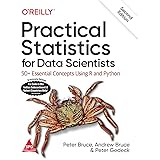Data Science applications in Retail
Applications of Data Science in Retail: Let’s use an example to better understand the applications of data science in the retail sector.
Example of data science in retail
Before any announcement was made, the analytics team at Target sat together and devised a way to determine whether a consumer might be pregnant.
It came out that the company could determine the possibility that a customer was pregnant and even forecast a likely delivery date by looking at their shopping patterns.
Target discovered how to use data mining to gain access to a woman’s womb.
With that knowledge, the retailer began to mix in offers addressed to those customers that included foetal products in addition to ordinary promotions.
The rise of data science technology has had some impact on almost every business. This is also true in the retail industry.
Is It Difficult to Learn Data Science » finnstats
Retailers have a fantastic opportunity to utilise the customer data they already have and convert it into useful insights that will increase sales thanks to data science. That is, after all, the main reason, right?
- Data Science in Retail
- Recommendation Engines
- Fraud Detection
- Powering Augmented Reality
- Personalized Marketing
- Price Optimization
- Intelligent cross-selling and upselling
- Inventory management
- Customer sentiment analysis
- Foretelling trends through social media
- Managing real estate
- Customer lifetime value prediction
Let’s go through in depth the various ways the retail sector utilises data most effectively:
1. Recommendation engines
While a user is perusing the Internet, the system filters the information and anticipates their preferences. It has been demonstrated to be an excellent tool for retailers to forecast consumer behaviour.
Customers can spot patterns and boost their sales, which increases revenue, by receiving recommendations.
Retail data science: recommendation system
Recommendation engines control themselves and make adjustments in response to customer selections. There are basically three main methods for making recommendations:
Collective filtration
This kind of technology predicts what you would like based on the preferences of numerous other users. If A likes Gionee and B like Gionee and Vivo, it is assumed that A might also enjoy Vivo.
Data Science in Banking and Finance » finnstats
Filtering based on content
This kind of system emphasises the products themselves rather than other users and suggests goods with comparable qualities or traits.
A hybrid system of recommendations
The findings of the two methods mentioned above are merged in this system.
Create a recommendation engine on your own with the Data Science Movie Recommendation Project.
2. Fraud Detection
Deep Neural Networks (DNNs), a type of machine learning and data science technique, are used to identify fraud in commercial transactions.
Fraud has become a significant issue for these businesses as a result of the increase in online transactions, including shopping, banking, filing insurance claims, etc. They are investing a lot of resources to identify and prevent fraud.
It’s a race between criminals trying to devise ways to commit fraud and a seller’s fraud detection system with the traditional rule-based approach to fraud detection.
Our current approach uses the enormous quantity of data gathered from online transactions and predicts fraudulent transactions, unlike the previous approach, which is not flexible.
3. Powering Augmented Reality
TopShop, a global corporation, has been experimenting with cutting-edge technologies to incorporate augmented reality in the buying process.
Customers can select clothing and view how they appear without putting them on. This facilitates decision-making and saves consumers time and effort.
In their 2013 catalogue presentation, the furniture firm IKEA introduced picture recognition and augmented reality for the first time.
Customers can virtually place catalogue products in their homes and scan them to see how they look there.
They don’t even need to leave the house to shop because they may choose the colours and sizes that best suit them.
4. Personalized Marketing
Retailers utilise this approach to incorporate personalised recommendations based on the browsing history, previous purchases, preferences, and likes and dislikes of their customers.
Additionally, it enables retailers to design highly focused ads that boost ROI.
If merchants have data and the skills to use it to draw conclusions that matter, all of this is feasible.
Usually, data science can help in this situation. Predictions about what customers will do next can be established by utilising the customer data from numerous platforms that collect customer data.
For instance, Vedic hair care developed a marketing strategy to draw customers in by offering them specialised goods. They make product recommendations based on the needs and tastes of their clients.
5. Price optimization
Having the ideal price for the client and the retailer is a big benefit provided by optimization techniques. Tools for price optimization include various internet techniques and client approaches (which are done secretly).
The analysis is done on the data obtained from the multichannel sources. It helps to identify the pricing flexibility, consumer location, customer buying attitude, purchasing season, and pricing of competitors.
Retailers can draw customers in, hold their interest, and implement personalised pricing strategies by using a real-time optimization model.
In essence, it assists merchants in charging customers what they perceive to be fair rates for the goods they care about the most, which improves both consumer perception of pricing and business profitability.
6. Intelligent cross-selling and upselling
Cross-selling and upselling are strategies used by all businesses in the retail sector to increase income. Cross-selling is the activity of advising clients to purchase complementary goods.
Giving customers the chance to purchase a high-end product that is superior to the one they are contemplating is known as upselling.
Without conducting A/B tests, using data science in retail can help enhance earnings. Data science allows us to target customised offers to various consumer segments and increase revenue.
Importance of Data Cleaning in Machine Learning » finnstats
7. Inventory management
Retailers make an effort to foresee the potential demand for a certain good or service over a specific time period. They can stock items to use during a crisis thanks to this demand forecasting.
The primary goal of the retail industry is to give its customers the right goods at the right time, in the right quality, and at the appropriate location.
To find trends and correlations in supply chains, retailers use a variety of data analysis tools and machine learning algorithms. The best stock and inventory management strategies can then be determined.
Strategies are developed to maximise the delivery of goods and manage the stock based on patterns that are related to sales trends.
8. Customer sentiment analysis
It’s a recent data science technique that’s widely employed in the retail sector.
Therefore, in the past, merchants employed focus groups and consumer surveys to study how customers interacted with the goods. This was a lengthy and somewhat expensive process.
Data from social media networks and user reviews of online services are used to conduct a consumer sentiment analysis. These resources are easily accessible, quick, and cost-free.
Retailers conduct analysis based on text analysis and natural language processing to identify positive, neutral, and negative opinions. Customer ratings and reviews are the form of output that is received.
This is done to enable retailers to provide prospective customers with better customer service.
9. Foretelling trends through social media
Social media is a huge platform, and people use it to express everything. As a store, social media offers a wealth of information that might point out trends.
Unstructured data, which includes a sizable quantity of texts, photographs, and videos, make up the majority of social media.
Through the application of Natural Language Processing (NLP) methods, data can be gleaned from social media. The data is then utilised to spot trends and foretell what products people would be interested in purchasing.
10. Managing Real Estate
Large shops can reduce their real estate management costs by using data science. Analyzing the maintenance information for the many pieces of equipment in a structure will stop catastrophic failure events in their tracks.
Retailers can save money by making efficient use of their expenses by forecasting maintenance needs using historical data analysis.
Data science not only creates a budget but also scans for upgrades in buildings like malls.
A “Zestimate” forecast, created by the American real estate business Zillow, is used to forecast how the property’s price will vary over the next five to ten years.
Where can I find Data Science Internships » finnstats
11. Customer lifetime value prediction
Client lifetime value (CLV) in the retail industry refers to the overall revenues that a customer can provide to the firm over the course of their whole customer-business relationship.
The revenues that are determined by past purchases, gaps between transactions, and the frequency of repeat business are given significant consideration.
In order to form them into the input, CLV models gather, filter, and clean data pertaining to customers’ preferences, costs, purchases, and behaviour toward certain products and their prices.
Retailers gain an understanding of the potential value of the current and potential customers after carefully evaluating the data. Machine learning algorithms and data science statistical approaches assist merchants in better understanding their customers and the need to improve their goods or services.
Customer lifetime calculation method
(Average Order Value) x (Number of Repeat Orders) x (Average Customer lifespan)
The average order value is determined using data from prior orders.
The quantity of repeat sales represents how frequently a specific order is placed.
The average customer lifecycle is the length of time a customer stays with you.
How many significant retail companies employ data science?
The major retail businesses that employ data science are listed below:
1. Amazon
Amazon, a well-known online store, has access to all of the data about its customers, including their names, search histories, payment options, and addresses. With all of your information at hand, Amazon can provide customised suggestions and deliver quick customer service.
2. Netflix
The worldwide preferences and watching patterns of the consumers of the video streaming service are all accessible. Netflix examines the data, proposes content that the audience will find appealing, and selects films or television shows that may be of interest to some people.
3. Starbucks
How does Starbucks continue to be profitable across all of its locations? They use data science tools and methodologies to assess the data they have on hand to choose each new opening location based on local demographics, traffic patterns, and consumer behaviour.
It aids them in deciding whether launching a new store in a specific location will be profitable for the company and benefit the brand.
Do You Have Data Science Experience But Lack Technical Skills (finnstats.com)
Conclusion
Every year, the number, diversity, and value of retail data increase dramatically. By creating data-driven plans, retailers are using data science to convert insights into profit margins.
Retailers now have a chance to compete in the market, enhance the customer experience, and raise sales and therefore revenue thanks to these applications of data science.
Additionally, data science still has a tonne more to give the retail industry as technology develops.






